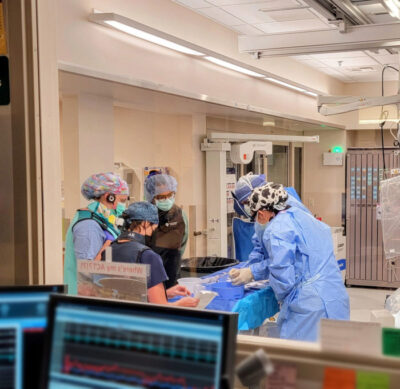Atrial Septal Defect (ASD) Procedure
The experienced physicians at the Cheyenne Regional Heart & Vascular Institute can perform an Atrial Septal Defect (ASD) procedure for patients with ASD.
 Atrial Septal Defect (ASD) is an opening or hole (defect) in the wall (septum) that separates the top two chambers of the heart (atria). This defect allows oxygen-rich blood to leak into the oxygen-poor blood chambers in the heart.
Atrial Septal Defect (ASD) is an opening or hole (defect) in the wall (septum) that separates the top two chambers of the heart (atria). This defect allows oxygen-rich blood to leak into the oxygen-poor blood chambers in the heart.
Once an ASD has been closed, it’s unlikely that more surgery will be needed. Rarely, a patient may have a residual hole. Whether it will need to be closed depends on its size.
To learn more about the Atrial Septal Defect (ASD) procedure at the Cheyenne Regional Heart and Vascular Institute, please call (307) 637‐1600.
What causes ASD?
The cause is usually unknown. Genetic factors can sometimes play a role.
What problems can ASD cause in the body?
Normally, the left side of the heart only pumps blood to the body, and the right side of the heart only pumps blood to the lungs.
With ASD, blood can travel across the hole from the left upper heart chamber (left atrium) to the right upper chamber (right atrium) and out into the lung arteries.
If the ASD is small, it may not cause symptoms or problems because the additional work done by the heart and lungs is minimal.
If the ASD is large, the extra blood being pumped into the lung arteries makes the heart and lungs work harder and the lung arteries can become gradually damaged. It may cause mild shortness of breath, especially with exercise. The increased blood in the lung may increase a patient’s susceptibility to pneumonia and bronchitis. On physical examination, the only abnormal finding may be a murmur or other abnormal heart sounds. With progressive damage to the lung vessels, the pressures in the lung may rise, and the patient can become more severely limited, eventually developing Eisenmenger’s syndrome